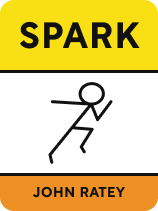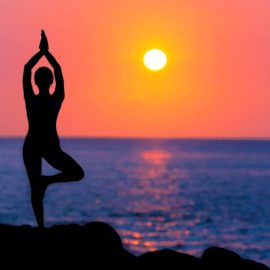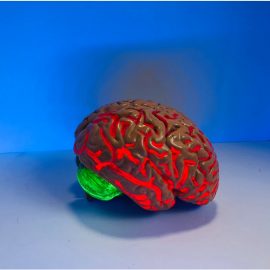

This article is an excerpt from the Shortform book guide to "Spark" by John Ratey. Shortform has the world's best summaries and analyses of books you should be reading.
Like this article? Sign up for a free trial here .
Do you find it difficult to incorporate regular exercise into your life? What kind of exercise is best when it comes to health? How can you work exercise into your daily routine to reap its many benefits?
Exercise supports brain health and contributes to your overall well-being—whether you’re facing anxiety, addiction, depression, or simply the desire to grow and learn, exercise helps. The benefits of exercise are not a secret, but many people find it hard to reap them because they struggle to incorporate exercise into their daily lives.
Here are some tips on how to incorporate exercise into daily life.
Aerobic Exercise Is Best
In his book Spark, John Ratey argues that not all forms of exercise are equally effective for optimizing brain function. Studies show that aerobic exercise is best. This isn’t to say that other forms of exercise aren’t beneficial, it’s just that aerobic exercise is currently understood to be optimal for tapping into the benefits we’ve explored.
(Shortform note: Researchers have demonstrated that both endurance exercise (e.g. running) and resistance exercise (e.g. weight lifting) increased the release of factors such as brain-derived neurotrophic factor and insulin-like growth factor. These proteins are critical for strengthening the neural network and reversing cell deterioration. This more up-to-date information suggests that resistance exercise should be included in your exercise routines.)
The benefits of exercise are distributed among three zones of intensity—the more powerful the workout, the more powerful the body’s response. We’ll take a look at how you can determine the intensity of your workout in the following subsection on heart rate.
- Low-intensity exercises are the baseline. At this level, your body begins releasing the neurotransmitters and factors we’ve discussed, and your body starts improving its metabolic function by burning fat. This helps to restore, maintain, and improve your brain’s function, setting the groundwork for more intense exercise.
- Medium-intensity exercise ramps up these processes and initiates more. At this intensity level, your body is exposed to a good amount of useful stress—the kind that builds resilience in your brain’s systems. New blood vessels are built, the process of neurogenesis is encouraged, your body’s stress response is conditioned and relaxed, and endocannabinoids are released.
- High-intensity workouts are powerful and must be handled with care. At this level, your body can reach a point where it becomes oxygen-deprived and your metabolism enters an anaerobic state. You feel this as muscle burn. Too much time in this state can be damaging for the body, but in moderate doses, it can be extremely beneficial. Accordingly, when you’re in the middle of a high-intensity workout, it’s best to stay just below this point most of the time and occasionally pass it.
(Shortform note: In Awaken the Giant Within, Tony Robbins suggests that you build a routine of exercise first on moderate-intensity aerobic exercise for a period of two to eight months. Laying the groundwork here, he suggests, will prepare you for engaging in more high-intensity anaerobic exercise.)
A reliable description of the sweet spot for a high-intensity workout is when the exercise feels “somewhat hard.” In addition to all the other effects we’ve discussed, during such a workout the body begins releasing human growth hormone (HGH), which burns fat, increases muscle growth, and grows your brain.
| Human Growth Hormone Isn’t Always Good Ratey doesn’t note the fact that human growth hormone (HGH or GH) is damaging to the body in high amounts. This isn’t a relevant risk for most people who get their HGH via exercise, but HGH is also prescribed as a pharmaceutical to reverse muscle loss, reduce fat, strengthen bones, and provide energy. In most cases, a legitimate doctor’s prescription is judicious and directly effective for treating symptoms of a disease. However, the illicit use of HGH—often sought as a “fountain of youth” drug (a phrase Ratey refers to)—can have serious negative consequences, including heart disease, diabetes, and a shorter life span. |
Ratey is careful to remind his readers that doing something is better than doing nothing. Don’t get discouraged if you can’t reach or maintain a high-intensity workout yet. As we’ve seen all along the way, the brain is optimized for movement, so the key is to move.
| World Health Organization Guidelines on Physical Activity The World Health Organization (WHO) echoes Ratey’s sentiment that doing something is better than doing nothing. According to the WHO, a lack of physical activity is a leading contributor to global mortality: They estimate that, as of 2016, nearly a third of all adults and four-fifths of adolescents were not active enough. Physical inactivity is known to increase the risk of heart disease, diabetes, and cancer, in addition to shortening lifespan. The WHO recommends that adults aged 18 to 64 should get at least 150 to 300 minutes of moderate physical activity during the week. Children and adolescents should get at least 60 minutes per day of moderate to vigorous physical activity. |
Determining Your Heart Rate
Because individual fitness levels vary, an exercise that’s intense for one person won’t be intense for another. You can determine the intensity of your workout by measuring your heart rate—the faster your heart is beating, the harder you’re working.
The first step is determining your maximum heart rate—the hardest your heart can work. This varies according to your age and overall health, but Ratey shares a rule of thumb for calculating it: Subtract your current age from 220. The intensity of your exercise is determined as a percentage of that maximum rate. The higher the percentage, the more intense the workout. This is simply calculated by multiplying your maximum heart rate by a decimal equivalent to the percentage you’re looking to achieve.
Let’s look at walking, jogging, and running as templates for intensity. Keep in mind that other forms of aerobic exercise can put your heart rate into these different zones (for example, jumping rope or cycling).
- Walking should put your heart rate between 55% and 65% of your maximum. This is considered low intensity.
- Jogging is 65% to 75%. This is medium intensity.
- Running is 75% to 90%. This is high intensity.
| Monitoring Your Heart Rate With a Smartwatch In Spark, Ratey encourages his readers to buy and use a heart rate monitor to track the intensity of their exercise. In general, these consist of a chest band sensor and a digital receiver of some kind (for example, a watch) that displays a reading. In the time since Spark was published, new technologies have made monitoring your heart rate even easier. Smartwatches are now typically equipped with heart rate monitors that are generally accurate for tracking your heart rate during exercise. Current readers of the book will likely be inclined to use a smartwatch. While this is generally fine, it’s important to be aware of caveats about their use in order to get the best information possible. Some experts have pointed out some of the shortcomings of the general smartwatch’s ability to give accurate data about your heart rate. They note that the typical sensors used in smartwatches have a higher error rate when used on darker skin or by those with a higher body mass index and their position on the wrist can lead to inaccurate readings. Bearing these facts in mind, with a little care and cross-checking, smartwatches can be helpful for ensuring your exercise is at the right intensity. |
Making Exercise Stick
Determining the best way to get exercise into your life is a personal decision. With that said, there are several tips on how to incorporate exercise into daily life to make it stick.
Do something you enjoy.
This may sound simple, but if you enjoy riding a bike and despise running, then ride a bike. The more you enjoy it, the more likely you are to do it.
Try new things.
Variety can keep it interesting, and interest can go a long way toward keeping you at it. So go ahead and learn a new skill or try a new routine. You may discover other forms of exercise you like.
Do it with others.
Humans aren’t only built for movement, they’re also built for social interaction. Exercising with others encourages accountability and magnifies the neurochemical effects of the workout–and it can make it more fun.
Keep at it.
Sometimes the best way to stick to a routine is to simply remind yourself that you can’t afford not to. When it comes to your mind and exercising, just remember that your body was built to move—it needs to move. So, whatever you do, keep it up. Don’t berate yourself if you miss a day or two, just get back to it as soon as you can.
(Shortform note: Some experts offer other tips for sticking to an exercise routine that can help you keep at it even when you don’t want to. For instance, they recommend that you set small goals for yourself, make charts of your progress, and give yourself meaningful rewards for achieving your goals.)

———End of Preview———
Like what you just read? Read the rest of the world's best book summary and analysis of John Ratey's "Spark" at Shortform .
Here's what you'll find in our full Spark summary :
- How exercising can help with addiction, anxiety, and depression
- A look at how exercise optimizes brain function and supports mental health
- What exercises are the most beneficial, and how to stick to a routine






